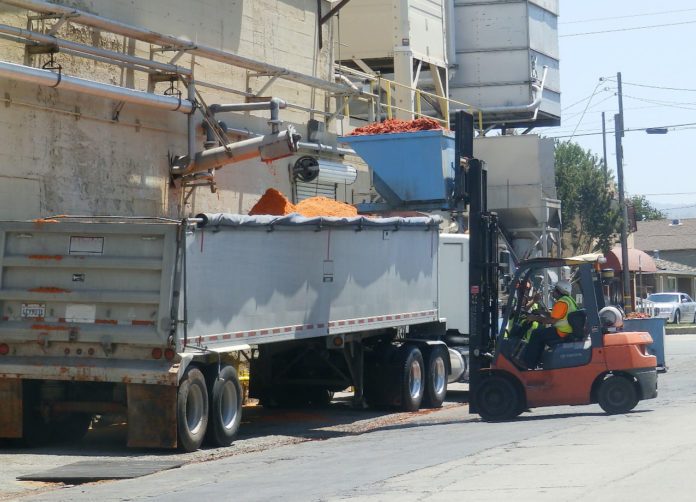Hollister residents in recent years have put up with a foul summer odor caused by San Benito Foods’ tomato cannery waste backing up the city’s industrial sewer pond. Now they’ll foot the bill for a related fine.
On Oct. 18, the Monterey Bay Air Resources District sent notice of a fine to the City of Hollister for $1,139 over the unpleasant summer smell that lasted for weeks in parts of the community in 2016, and spurred complaints by local residents who included the mayor.
According to paperwork sent to the City of Hollister and confirmed by the Free Lance, the city violated district Rule 402, which deems the odorous air as a public nuisance. A staff official at the air resources district this week said the agency received multiple complaints about the bad summer air, but information about prior years was not immediately available.
Amy Clymo, the engineering/compliance manager with the air resources district, said access to that information would require a public records request, which would allow 10 days for a response. The Free Lance on Tuesday submitted a request for information about any potential, prior air district fines against the city.
This isn’t the first time the City of Hollister has been fined for odorous air. Documents obtained by the Free Lance through a public records request show that the city was issued a fine of $3,206 on Nov. 4, 2014.
Between July 29, 2014 and July 31, 2014, the city’s industrial wastewater treatment plant violated District Rule 402.3 by “the discharge of air contaminants in such quantities as to create a public nuisance, to wit; sewer/rotten odors from processing tomato effluent, impacting the downwind neighborhoods of the plant,” reads a notice violation.
It all has to do with that odor from the city’s industrial wastewater pond—one of two sewer ponds along with the primary commercial operation—which wreaks havoc to the noses of people in parts of Hollister, even miles from the west-side waste facilities, starting in July. The industrial pond operation, otherwise dormant when not in use by the cannery, kicks in for 10 to 12 weeks for San Benito Foods’ canning.
When a similar odor cropped up throughout town two years ago, it spurred conversation among city council members about a floating islands concept supported by Mayor Ignacio Velazquez. Discussions, however, led to the city instead spending $2.13 million on traditional sludge removal at the two waste ponds, prefered over approving the more natural concept from Mokelumne Hill-based Floating Islands West costing an estimated six figures.
After the latest bout with the cannery’s odor in July, Velazquez set up a meeting with San Benito Foods’ officials and others to examine solutions. He again broached the floating islands concept and said he would push for the idea in light of the smell returning.
The mayor had not heard about the fine when initially reached this week, but again expressed concern about the city’s direction and indicated he would reinvigorate efforts to find a better solution.
San Benito Foods Plant Manager Kent Rounds did not return phone calls from the Free Lance seeking comment before press time.
San Benito County’s Environmental Health Manager Darryl Wong in July said his agency had been receiving many complaints about the issue. The division didn’t have jurisdiction over investigating such complaints, so it referred them to local code enforcement.








